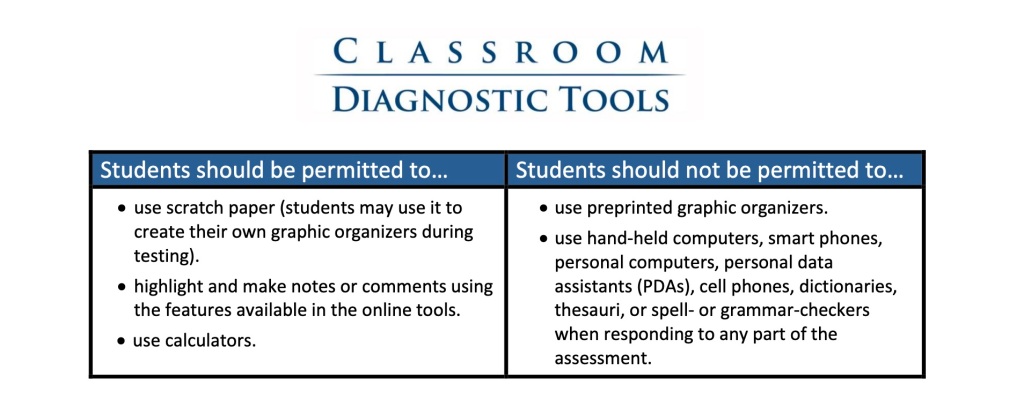
Ladies and Gentlemen, children of all ages, welcome to the Commonwealth of Pennsylvania’s Keystone Exam Circus!
Here you will see children of 14 to 18-years-old perform death defying stunts just in order to graduate!
They’ll jump through the flaming hoop of the Algebra I Exam!
They’ll hop through the spiked hoop of the Literature Exam!
And they’ll even bound through the nitroglycerine filled hoop of the Biology Exam!
All this just so they can qualify for a diploma they’ve already earned by passing 12 years or more of coursework!
Now isn’t that the greatest show on Earth!!!!!!?
Apparently, some school directors must think so. Because they’ve decided to force all the students in their districts into the center ring.
Because as stupid as the state law is – and it is very, very stupid – it doesn’t require all students to pass these tests to graduate. Kids don’t even have to take the tests if they don’t want.
If they so choose, they may skip one or more of these ridiculous assessments in favor of an alternative.
They can take a different test like the SAT, ACT, etc., achieve an industry-based competency certification, successfully complete a service-learning project, or finish an internship or cooperative education program, among other metrics.
Sure! It’s a glorified fetch quest full of unnecessary complications and anxiety, but it’s better than being forced to pass a cockamamie fill-in-the-bubble corporate boondoggle.
Unfortunately some school board members don’t see it that way.
It’s not that they want to remove this senseless hurdle from students who have already proven they’ve learned the prerequisite skills to graduate. They still want kids to go on a wild goose chase, but they can’t stomach the idea of kids picking their own goose.
To switch back to the metaphor with which I started this piece, they would rather students jump through the standardized testing hoop – the one made by Data Recognition Corp (DRC), the Minnesota corporation that writes the Keystone Exams and has been gorging on $533 million in Commonwealth tax dollars for the last decade. Not the hoop that pays the College Board or one that – God forbid – doesn’t make a huge corporation any richer.
Why?
It’s beyond me.
Maybe they think forcing students down the DRC path will help improve district academics.
Maybe they love fill-in-the-bubble tests.
Or maybe they just hate kids…
I don’t know.
But one thing is certain – the Keystone Exams are a costly mistake the state forces taxpayers to fund and kids to endure unnecessary gatekeeping and narrowed classroom curriculum.
The whole mess started when the federal government reauthorized its education law formerly called No Child Left Behind (NClB). That law required kids to take standardized tests in middle school and once in high school. When Congress changed the name to the Every Student Succeeds Act (ESSA), it allowed more flexibility in the high school test. It didn’t just have to be a standardized test. The state could pick from all kinds of options. Pennsylvania chose one of almost everything including new standardized tests – the Keystones!
But the state legislature couldn’t decide whether to make it a graduation requirement until just last year.
Students who graduated in May (2023) were the first required to pass these exams or qualify with an alternate assessment, and the data is still out on its full impact.
A report conducted by The Philadelphia Education Research Consortium estimated that only about one third of city students would meet graduation requirements by passing the Keystone Exams. Specifically, nearly 50 Philadelphia high schools had less than 25% of their students with Keystone proficiency rates sufficient to graduate. The report concluded that some additional percentage of students would graduate with alternate assessments but there was no way to estimate what percentage that would be. Would fewer graduate? The same? More? No one knows yet.
Given this uncertainty, it’s difficult to fathom why school board members would want to require tests that may stand in the way of students’ future success.
This is especially true in districts serving poorer families.
Kids in wealthier districts almost always do better on the Keystone Exams than those in poorer districts, according to a report by State Auditor General Eugene DePasquale and State Sen. Andy Dinniman.
In fact, the report notes that of the 100 state schools with the highest scores, only five were located in impoverished districts —where the average household income is below $50,000.
Why would any district – especially those serving students with lower socioeconomics – feed kids into such a system, especially when they don’t have to play that game?
“The Department of Education itself said they [the Keystone Exams] are not an accurate or adequate indicator of career or academic readiness,” Dinniman said. “…These tests have faced opposition from almost every educational organization that exists.”
He’s right.
A 2019 report conducted by the state Legislative Budget and Finance Committee found that state educators (both principals and classroom teachers) overwhelmingly disapprove of the state’s standardized tests. That includes the Pennsylvania System of School Assessment (PSSA) tests given in grades 3-8 and Keystone Exams given in high school. Educators think these tests are ineffective, expensive and harmful to district curriculum and students.
When it comes to the PSSAs, 76% of teachers and 67% of principals said the tests were bad assessments.
For the Keystone Exams, 60% of teachers and 45% of principals said the tests were ineffective indicators of student achievement.
Both principals and teachers said their curriculum had been narrowed to prepare students for PSSAs and Keystone Exams. Instead of going into more depth on regular classwork or learning new skills, the focus shifts to teaching to the tests.
Taking the tests also eats up valuable class time. Administering the assessments takes between 5.7 to 8 days for each kind of test – the PSSA and the Keystone Exams, according to principals.
In addition, the report details the cost of giving these tests. In fiscal year 2017-2018, the state Department of Education paid $42.17 million for these tests.
This is part of a national trend:
“Standardized tests and test preparation have subsequently become big business and that multibillion dollar business continued to grow since the enactment of NCLB and the subsequent enactment of ESSA. According to the Pew Center on the States, annual state spending on standardized tests increased from $423 million before the NCLB (enacted in 2002) to upwards of $1.1 billion in 2008 (to put this in perspective this reflects a 160 percent increase compared to a 19.22 percent increase in inflation during the same time period). A more recent study by the Brown Center on Education Policy at Brooking put the cost at upwards of $1.7 billion in 2011 related to state spending on standardized tests.”
In just one year (2019) the state paid DRC $17.6 million to administer and score the Keystone Exams, said DePasquale. Between 2015 and 2021, the state spent nearly $100 million on the exams. And if we add in the PSSA, the corporation has collected $533 million from the Commonwealth over the last decade, DePasquale said.
Why are some school board members so dead set on making sure we keep paying them?
Federal law requires some kind of accountability measure before graduation whether it be a standardized test or something else. Why can’t the state simply use classroom grades for this measure? These are the daily assessment of student learning. How does it help students by inserting a corporation to make more money off of taxpayers?
The whole process is a complicated, unnecessary circus with our kids in the role of trained monkeys spinning plates so big business can slurp up more of our money.
I hope school directors will begin to understand this and not give in to the standardized testing spectacle.
It’s time for someone to send the clowns back home.
Like this post? You might want to consider becoming a Patreon subscriber. This helps me continue to keep the blog going and get on with this difficult and challenging work.
Plus you get subscriber only extras!
Just CLICK HERE.

I’ve also written a book, “Gadfly on the Wall: A Public School Teacher Speaks Out on Racism and Reform,” now available from Garn Press. Ten percent of the proceeds go to the Badass Teachers Association. Check it out!
















